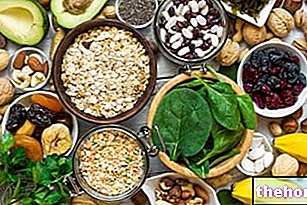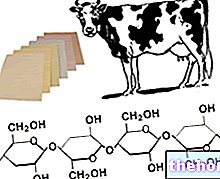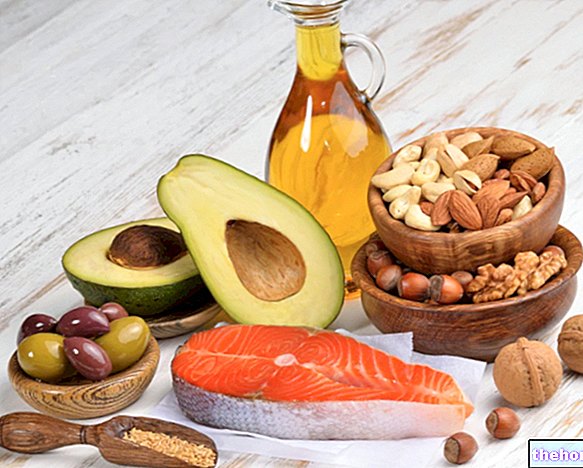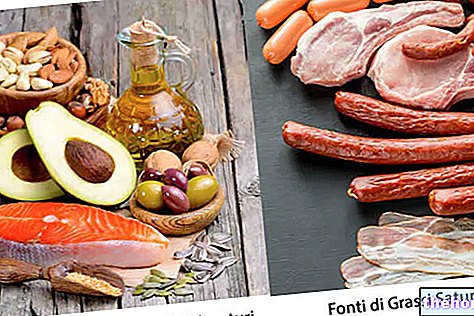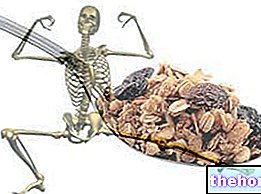Stevia, stevioside and steviol glycosides
Stevia (Stevia Rebaudiana subsp. Bertoni, Asteraceae family) is a small shrub native to the border area between Brazil and Paraguay, where "it is known by the name of ka "ha he" e (sweet herb or honey herb). Of course, the name is not accidental at all, since Stevia is rich in sweet components, with a sweetening power that can even exceed 300 times the sweetness of sucrose.

Stevia glycosides are quite stable to heat and pH, do not ferment, do not caramelize when cooked and have good solubility in water, methyl and ethyl alcohol. In addition, they are also safe for patients with phenylketonuria.
Main glycosides contained in the tissues of Stevia:
- 5-10% stevioside (sweetening power 250-300 times higher than sucrose);
- 2–4% rebaudioside A (sweetening power 350–400 times higher than sucrose; appreciated for its minor bitter-licorice aftertaste compared to other steviol glycosides);
- 1–2% rebaudioside C;
- 0.5 -1% dulcoside A.
The above quantities vary according to the cultivars and the growing environment of Stevia, including seasonal variations.
In addition to glycosides with a high sweetening power (see table), Stevia is rich in iron, manganese and cobalt; it is free of caffeine and naturally also contains carbohydrates, proteins, vitamins and minerals. popular, and some scientific evidence, attribute different properties: antacid, antibacterial, slightly laxative (by osmotic action), hypotensive and hypoglycemic.
Beyond the high sweetening power, a fundamental characteristic of Stevia is that the glycosides contained in it are not absorbed and as such have no significant effect on glycemic levels. In the intestine, however, colon bacteria can degrade stevioside to steviol, which is readily absorbed by the enteric wall, inactivated by the liver and immediately expelled with the urine. Due to the presence of a study, dated 1985, which highlighted a possible and never confirmed mutagenic capacity of steviol at high doses, Stevia and its derivatives have undergone a rather troubled legislative process. While the absolute safety of rebaudioside A now seems certain, some doubts remain about the possible genotoxicity of stevioside and steviol taken at high doses; Most of the studies, however, agree on the absolute safety of these sweeteners, among other things empirically enveloped by the centuries-old tradition of using Stevia as a sweetener for foods, including maté (in the areas where the consumption of Stevia is more widespread and derivatives, there is no increase in the incidence of tumors in any way attributable to steviol and stevioside).
Together with the numerous evidences on the total harmlessness of Stevia, various researches attribute various beneficial effects to this plant. In fact, in addition to boasting a practically zero caloric and cariogenic power, Stevia not only does not affect blood glucose values, but even seems to decrease them (hypoglycemic properties), improving glucose tolerance. This effect seems to be attributable to a "direct action of stevioside and rebaudioside A on pancreatic beta cells, where in the presence of glucose it would stimulate the production of insulin. The fact that Stevia and its glycosides stimulate the production of insulin only when the blood sugar is abnormally high, it is quite beneficial, as it avoids the risk of hypoglycemia in diabetic patients.
In addition to being a particularly interesting sweetener in the case of diabetes, stevia is useful as a zero-calorie sweetener in diets aimed at promoting weight loss.
Finally, the alleged hypotensive effect of Stevia (still awaiting unequivocal confirmations) and its glycosides, seems to be linked to the inhibition of the passage of Ca ++ from the extracellular space to the cytosol.
Stevia online

Online you can buy one kg of 100% natural Stevia, a sugar substitute, crystalline, calorie-free and of the highest quality, capable of replacing traditional refined sugar added in food and drinks 1: 1. For this product, only steviol glycosides (a white crystalline powder, extracted from the leaves of the stevia plant) with a Reb-A content of over 97%, and erythritol (a 100% natural sweetener) from controlled cultivation are used. The product has no bitter aftertaste.
For sale on Amazon

Alternatively, Pure Stevia Powder is available, with a strong sweetening power: the tip of a teaspoon is enough to sweeten an entire cup of coffee, milk or herbal tea. And it can also be used as a substitute for sugar (but with the advantage of having zero calories compared to 392 kcal per 100 g of sucrose) to prepare desserts and dishes. The licorice aftertaste, typical of stevia, is barely hinted at. Even once opened, the product, packaged in a practical jar, has a good shelf life.
For sale online
Wholemeal Cake for Diabetics With Stevia - Sugar-free
A dessert rich in fiber and without sugars, ideal (with due moderation) also in the diet of the diabetic to replace traditional sweets. The taste of the cake is negatively affected by the licorice aftertaste of stevia, considered by many to be disgusting; it can be remedied by substituting or by cutting stevia with other natural sweeteners, such as erythritol.
Wholemeal lemon cake - diabetic cake with stevia
Problems with playing the video? Reload the video from youtube.
- Go to the Video Page
- Go to the Video Recipes Section
- Watch the video on youtube
Legislation - Stevia in Food
Like the vast majority of alternative sweeteners to sugar, despite its natural origins, stevia has also been the subject of criticism regarding a possible carcinogenic effect of some of its components, such as steviol and stevioside.
At the beginning of 2009 the FDA (Food and Drug Administration), a sovereign body in the United States for the regulation of food and pharmaceutical products, considered Rebiana (a sweetener based on rebaudioside A) "generically recognized as safe", approving its " placing on the market as a food additive. Rebiana is still today the main ingredient of Truvia, developed by the multinationals Coca-Cola and Cargill, and consisting of rebaudioside A, erythritol and natural flavoring. This product is already popular in the United States, where it currently covers about 10% of the market. sugar substitute sweeteners; other similar products derived from Stevia based on rebaudioside A, such as Purevia developed from pepsi, have also been placed in this thriving market.
In September 2011, the use of Stevia and its derivatives was admitted by the European Union, therefore also in Italy, albeit with some reservations, which substantially limit its use to low-calorie food products and / or without added sugars (the presence of steviol glycosides can also be indicated on the label by the code E960). A few months earlier, the EFSA (European Food Safety Authority) had expressed a positive opinion on the safety of Stevia glycosides, establishing an ADI (or DGA) for each of them. In particular, the Panel set an acceptable daily intake of 4 mg / kg body weight / day for steviol glycosides, a level consistent with that already defined by the Joint FAO / WHO Expert Committee on Food Additives (JECFA) in 2006. However, these limits seem to be easily overcome, especially in children, in the case of heavy consumption of foods rich in steviol glycosides, in particular flavored soft drinks. Again according to EFSA data, registered in January 2011, for European children (aged between 1 and 14). Exposure would range from 1.7 to 16.3 mg / kg bw / day, while for adults revised exposure estimates range from 5.6 to 6.8 mg / kg bw / day.
Sponsored content: Mypersonaltrainer.it presents products and services that can be purchased online on Amazon and / or other e-commerce. Every time a purchase is made through one of the links on the page, Mypersonaltrainer.it could receive a commission from Amazon or from the other e-commerce companies mentioned. We inform you that the prices and availability of the products are not updated in real time and may change over time, so we invite you to check availability and price on Amazon and / or on other e-commerce mentioned.
Other Foods - Sweeteners Acesulfame K Aspartame Sugar beet Sugar cane Sodium cyclamate Dextrose Sweeteners Erythritol Fructose Maltose Mannitol Molasses Saccharin Saccharose Maple syrup Agave syrup Fructose syrup Glucose syrup Sugar sorbitol Articles Stevia Sucralitol sugar SWEETENERS Categories Alcoholic Foods Meat Cereals and derivatives Sweeteners Sweets Offal Fruit Dried fruit Milk and Legumes Oils and Fats Fish and fishery products Salami Spices Vegetables Health recipes Appetizers Bread, Pizza and Brioche First courses Second courses Vegetables and Salads Sweets and Desserts Ice cream and sorbets Syrups, liqueurs and grappas Basic Preparations ---- In the Kitchen with leftovers Carnival recipes Christmas recipes Light diet recipes tici Recipes for the Holidays Recipes for Valentine's Day Vegetarian Recipes Protein Recipes Regional Recipes Vegan Recipes
